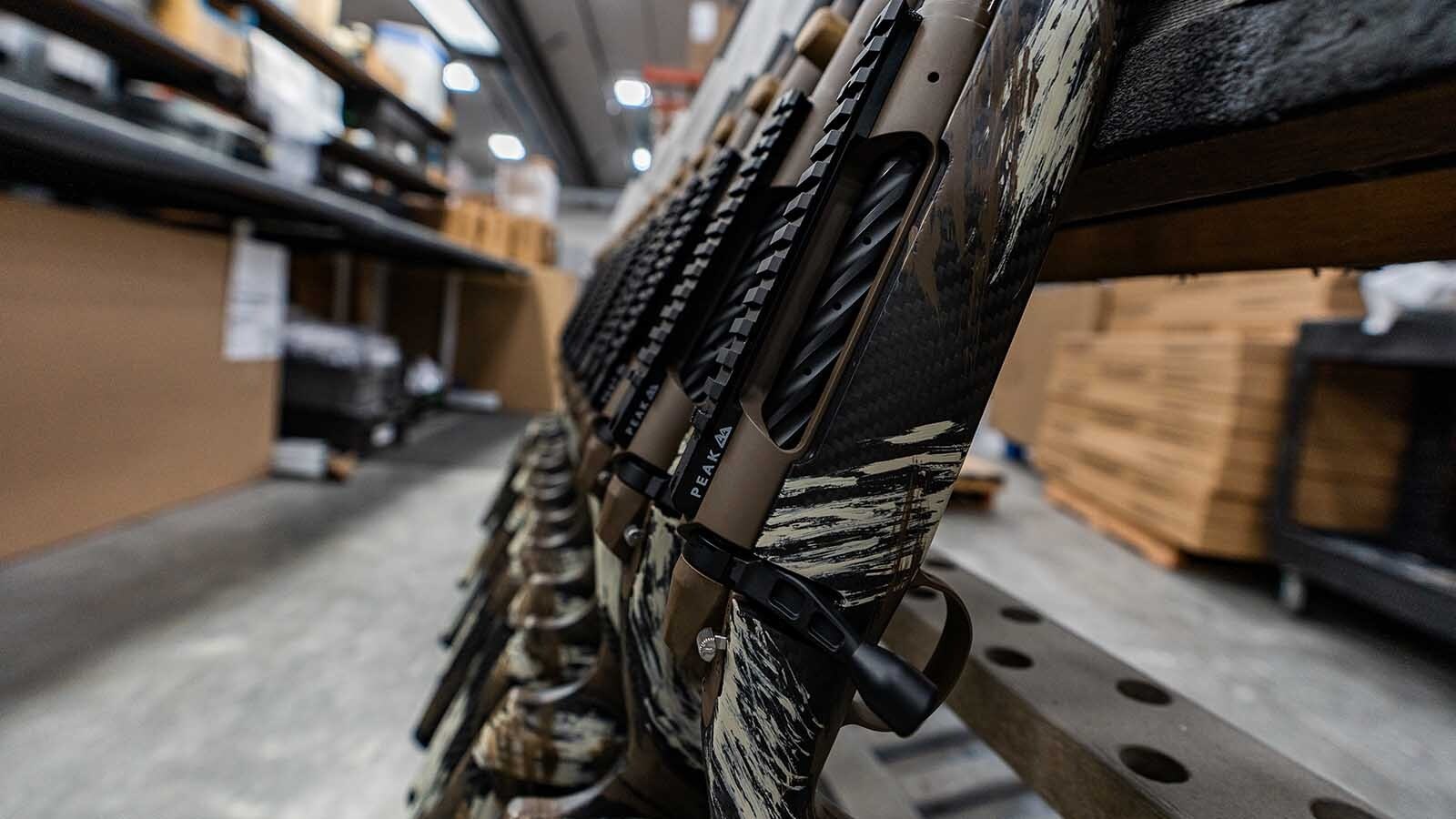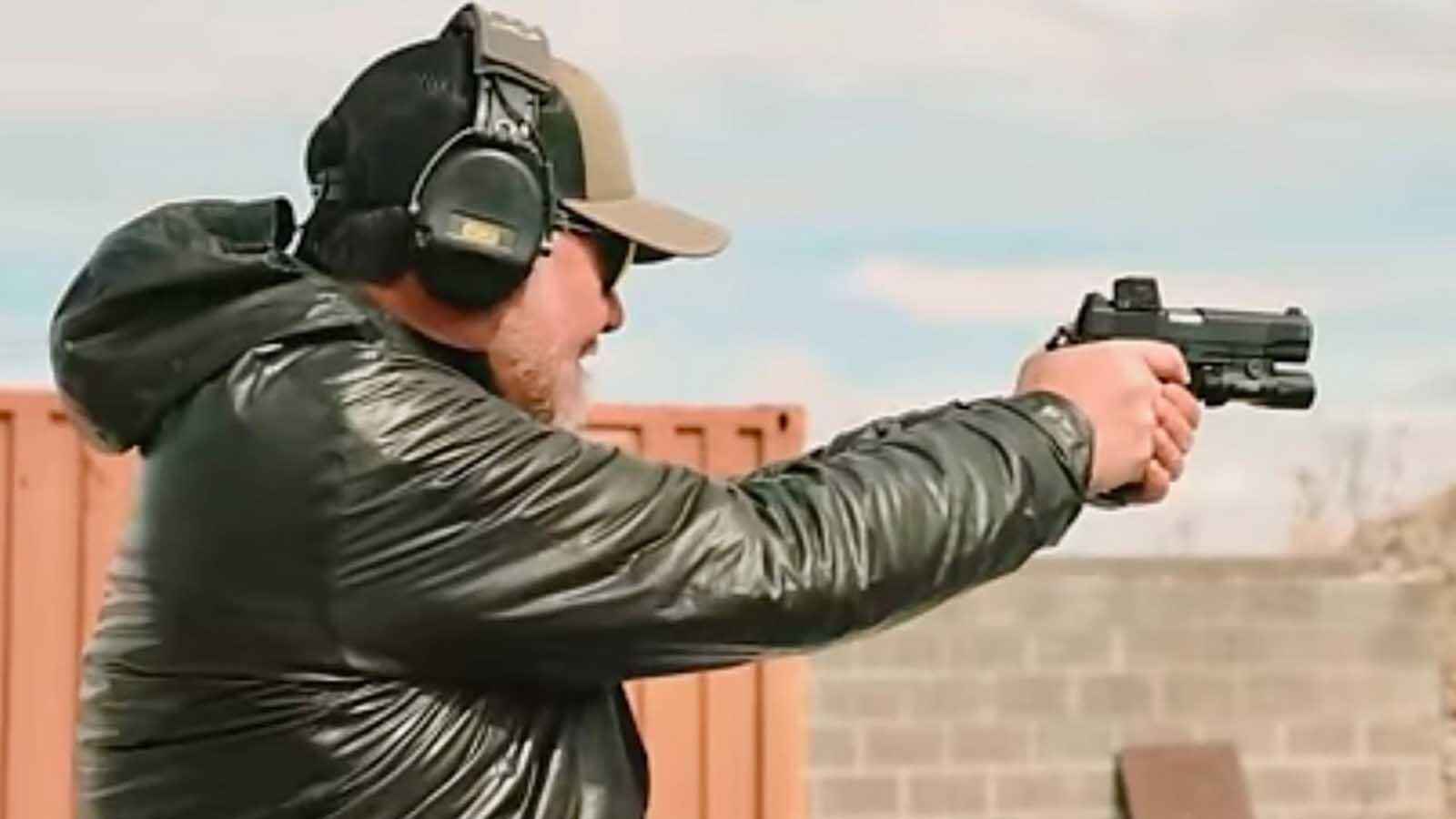While the firearms industry is cyclical, the current slump in gun and ammo sales might defy the usual explanations, two Wyoming industry experts told Cowboy State Daily.
Gun sales are frequently driven by politics, said Luke Thorkildsen, the chief operating officer with Weatherby Inc. in Sheridan.
When people are worried that certain firearms – such as AR-15 rifles – might be banned, they rush out to buy them, he said.
However, the AR-15 market might finally be saturated, said Jason Crotteau, who runs the Riverton-based Wyoming Tactical shooters training company.
“We’ve spent the last decade pushing, pushing, pushing for people to buy AR-15s. So now, everybody who wanted one has one,” he said.
‘Trump Slump’
Gun sales can be affected by who is sitting in the Oval Office.
When presidents who favor gun control are in office, such as Barack Obama and Joe Biden, firearms sales can be brisk, Thorkildsen said.
That’s because people might be rushing to buy guns that they worry could be banned later on.
Conversely, after current President Donald Trump was elected to his first term in 2016, a “Trump Slump” in gun sales followed, he said.
Trump is gun-friendly, and the worries about bans dissipated after he one the election.
And although a similar 2024 “Trump Slump” might explain current lagging gun sales, there could be other factors at play, Thorkildsen said.
People might be spending less not only on firearms, but on more pricey items in general, because of uncertainly over current geo-political instability, inflation, interest rates and tariffs, he said.
Crotteau said that the current instability – including heightened alerts of possible terrorist attacks on American soil – might have people grateful for the firearms they have, but not necessarily ready to run out and buy more.
He added that international tariffs have made firearms accessories, gunstocks, slings, and the like, more expensive, because many of those items are made in China.
“Something that might have cost you $50 last year now costs you $150 because of the tariffs,” he said.

Hunting Gun Sales Ebb And Flow
Weatherby specializes in hunting rifles and shotguns. Most of its products are considered higher-end.
The Vanguard rifle is less expensive, often coming in at under $1,000, Thorkildsen said.
The company’s Mark V rifles start at over $1,000, and can into the $4,000 to $5,000 range.
Many of the politically-driven ups and downs in gun sales are tied to defensive firearms, such as AR-15 style rifles and handguns.
So that raises the question of why sales of Weatherby’s hunting firearms would be affected.
It’s the old principle that “a rising tide lifts all boats,” Thorkildsen said.
Brisker gun overall gun sales help Weatherby in the same manner, he said.
And if gun dealers have a greater revenue flow by selling more defensive firearms, they can afford to increase their entire inventory, and put more Weatherby rifles and shotguns out on display to entice customers, he said.
The hunting firearm market is usually slow this time year, Thorkildsen said, because the fall big game and bird seasons are a long way off.
Sales usually pick up in August, when hunting is back on everybody’s minds, he said.
Weatherby is rolling out its new line of Model 307 Alpine hunting rifles in hopes of catching the pre-hunting season surge.
Those rifles are in the $2,200 range and offer features that should appeal to hunters who like to trek into rugged country in Wyoming and other western States, Thorkildsen said.
Those include a carbon-fiber stocks that are lightweight, but also weather-resistant and tough, he said.
2011 Pistols Hit The Target Shooting Market
Crotteau said that while defensive rifle sales might be slow, pistol sales still seem brisk.
He offers defensive firearms training and said, “I’m seeing people showing up to classes with new guns all the time.”
Many of those are semi-automatic pistols, usually in about the $500 to $600 price range, he said.
Competitive target pistol shooting is also gaining popularity, which might help boost sales eventually.
Target shooters are increasingly fond of 2011 pistols, he said – with the most popular models running in the $1,200 to $1,500 dollar range.
The patents for that design recently expired, so numerous companies are putting out 2011s, Crotteau said.
The design is based off the iconic 1911 pistol, but with more modern features.
Those include double-stack ammunition magazines, whereas the 1911 can take only single stack magazines. Single stack means just that – the magazine can accept cartridges stacked one on top of the other in a single line – limiting capacity to only 7 or 8 rounds in the popular .45 APC chambering.
Double-stack magazines carry ammunition in offset stacks, and can carry double, or more the ammunition.
But that also means the pistol’s handle, into which ammunition magazines are inserted, must be wider.
So, 2011s seem to be more popular as target range guns, rather than to be carried concealed for self-defense, Crotteau said.

Stocking Up On Ammo
Ammunition sales are also lagging, Crotteau and Thorkildsen said.
Partly because ammo is expensive, but also because many people still have stockpiles they built up during the Covid pandemic.
Particularly during the early days of Covid in 2020, there was “ammo hoarding” going on, Thorkildsen said.
“If you were a one box (of ammo) guy, you became a one case guy. And if you were a one case guy you became a one pallet guy. And if you were a one pallet guy you became a one container guy,” he said.
Many people still haven’t shot through their stockpiles and aren’t buying any more ammunition right now, he said.
Thorkildsen said price hikes driven by inflation also factor in.
“People are back to buying one box of ammo at a time. They can’t afford to go out and buy an entire case,” he said.
Mark Heinz can be reached at mark@cowboystatedaily.com.





